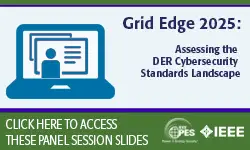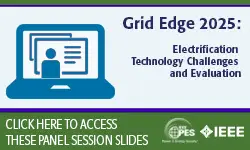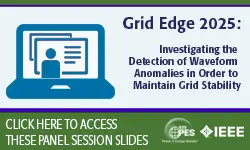Distribution Utilities Operation with High Penetration Levels of IBRs: Challenges and Lessons Learned
Janie Smalley, Arturo Bretas, Dan Kopin, Juan Gers
-
Members: FreePES
IEEE Members: $25.00
Non-members: $40.00Pages/Slides: 30
Panel
12 Sep 2024
The legacy grid is gradually transitioning to higher levels of electrification towards achieving the vision of clean and reliable energy. The latter is dependent on high penetration levels of Distributed Inverter based resources (IBR) and distributed smart technologies (i.e., smart meters, distributed grid intelligent (DGI), etc.) in Distribution Networks. The increased penetration of IBRs may generate unknown events and unmodelled dynamics seen as oscillations, bifurcations or instability, which challenges overall system resiliency and reliability. It also raises new challenges for operation; for example, unforeseen dynamics are not as easily discriminated from unknown events around real time operation of IBRs. The consequences of faster dynamics due to high penetration levels of IBRs on a distribution utility’s (DU’s) operation are not well-understood to contemporary grid operators, planners and stakeholders. This is partially due to the novelty of the phenomena and the lack of full observability in the distribution networks. There is thus a growing need for innovative solutions towards a DU’s operation, control and protection when also considering IBR penetration. Emerging paradigms in networking, coupled with IoT (Internet of Things) and cloud-based virtual smart grid frameworks, are promising enhanced and distributed grid operation architectures with impacts yet to be quantified within a DU’s operation. This panel brings together four experts from a National Lab, a utility, and industry to share experiences, insights and innovations on DU operation under increasing penetration levels of IBRs. The panelists will firstly identify matters specific to challenges in DU operation, characterized by regional geography and climate. Lessons learned from specific actions in two major utilities are then presented. New potential areas of research, augmenting standard operation formulations, with distributed physics-model based inspired machine learning models, are then discussed. Finally, we introduce ways to harness developing smart grid technologies towards improved cyber mitigation and physical protection, and present associated use-cases.
Chairs:
Arturo Bretas, Patrick Kreidl
Primary Committee:
(AMPS) Distribution System Analysis



